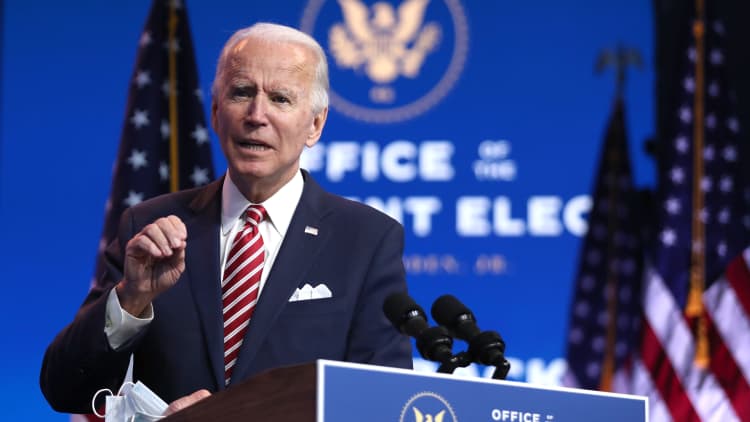Six days before he's sworn into office, President-elect Joe Biden on Thursday released his anticipated Covid relief plan, which includes boosting federal unemployment payments to $400 per week and extending them through September.
Under current policy signed into law Dec. 27, 2020, enhanced benefits include an additional $300 per week on top of state aid through March 14, and federal programs phase out completely by April 11.
But under the Biden proposal, federal jobless programs will continue through the fall until the end of September. Some 965,000 Americans filed for state unemployment benefits for the first time last week, according to the Labor Department — the highest number of first-time filers since August. Another 284,000 applied for Pandemic Unemployment Assistance, which supports gig workers and those not traditionally eligible for state aid.
In total, 18.4 million people are still receiving jobless benefits around the country, more than 11 million of whom are on two federal programs created during the Covid crisis: PUA, as well as Pandemic Emergency Unemployment Compensation, for the long-term unemployed.
Meanwhile, as more Americans die from the virus, economic recovery has reversed in one respect: The December jobs report finds that the U.S. economy shed 140,000 jobs in the month, and women workers made up 100% of the losses.
Biden's plan states he will work with Congress to link the level of federal jobless benefits to economic factors, in what's known as implementing "automatic stabilizers," The Washington Post reports. Economists have long pushed for programs to be tied to such indicators, such as the unemployment rate, rather than an arbitrary calendar date determined by Congress.
The $1.9 trillion proposal, titled the American Rescue Plan, also calls for direct payments of $1,400 to most Americans (bringing the total relief to $2,000 on top of $600 payments passed in December), increasing the federal minimum wage to $15 per hour, extending the eviction and foreclosure moratoriums until the end of September, and putting $50 billion toward Covid-19 testing.
Though Democrats will have the majority in Congress, with Vice President-elect Kamala Harris able to cast tiebreaking votes in the Senate, Biden is expected to gain bipartisan support for the legislation, CNBC reports.
Biden will formally introduce the plan during a speech at 7:15 p.m. ET Thursday night from Wilmington, Delaware. It's the first of two major spending initiatives Biden intends to put forth within his first few months in office.
Correction: This story has been updated with the accurate dollar value of the relief proposal.
Don't miss: The best credit cards for building credit of 2021



